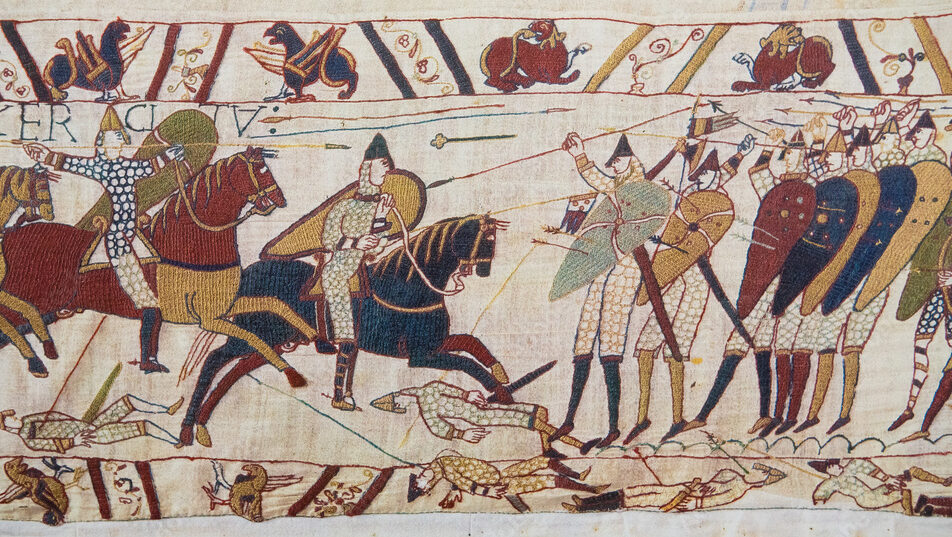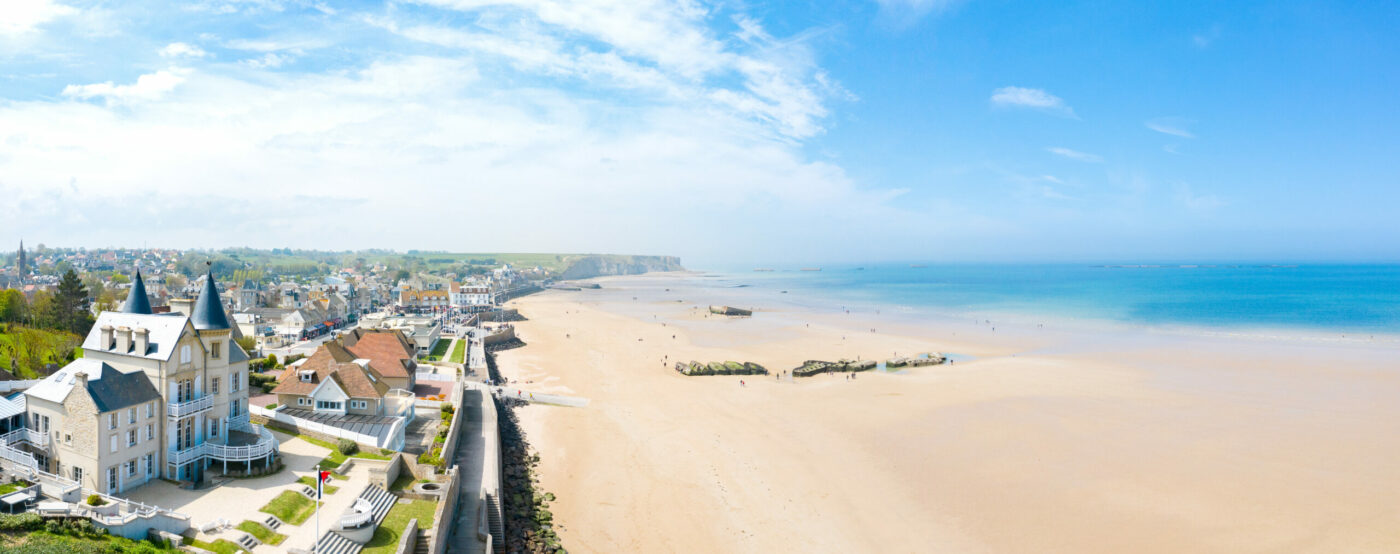Le Clos de la Chapelle
Walking around in Bayeux

Bayeux through the centuries
Founded under the name of « Augustodurum » in Gallo-Roman times, the city was surrounded by ramparts in the 3rd century to protect itself from invasions. In 924, it became part of the domain of the Viking chief Rollon, the first Duke of Normandy, and after Rouen, it became the most important town in Normandy. A castle was built in 960 by the 3rd Duke of Normandy, Richard I.
During the medieval period, five hamlets were created outside the walls, reflecting the development of the town at that time. Under the impetus of Bishop Hugues II, and then his successor, Odon de Conteville, brother of William the Conqueror, the town was enhanced by a new cathedral, dedicated in 1077.
The 17th century was marked by the development of religious institutions: construction of the seminary, the Hôtel-Dieu, etc. It was also the time when the first lace factories were established. It was not until the beginning of the 18th century that the town underwent deep changes with the destruction of the ramparts and the castle, which was dismantled on the orders of Louis XVI in 1773, and the construction of private mansions reflecting the luxury of the time.
Bayeux was the first French town to be liberated after the D-Day landings on 7 June 1944. Spared by the Allied bombing, it suffered only minor damage. During the Battle of Normandy, Bayeux served as a base for the British army.
Today, the town preserves a medieval historic centre and architectural treasures linked to its history. In addition to its famous Romanesque and Gothic cathedral, Bayeux is characterised by half-timbered houses, manor houses with towers, large mansions and elegant town houses.
A 2.5 km path in the old town of Bayeux allows you to explore the medieval town and discover its history and secrets thanks to 23 explanatory kiosks. A specific marking on the ground, made up of bronze nails, allows you to find your way along the route.
The Bayeux Tapestry
The Bayeux Tapestry, a unique document in the world, is a woolen embroidery on a linen canvas made in the 11th century. Almost 70 metres long and 50 centimetres high, it relates the conquest of England in 1066 by William the Conqueror, Duke of Normandy.
Remarkably well preserved, the Bayeux Tapestry is included in UNESCO’s « Memory of the World » register, to be protected and listed as a document of universal interest.
Saved many times throughout history, the « Telle du Conquest », its other name, continues to reveal its secrets…


Notre Dame Cathedral
Located in the heart of the Old Bayeux, Notre Dame Cathedral is a remarkably well-preserved Norman jewel of medieval architecture.
Bayeux Cathedral was consecrated in 1077 by Bishop Odon de Conteville in the presence of his brother, William the Conqueror. It was to decorate the nave of the cathedral that Odon had the famous Bayeux Tapestry embroidered, which tells the story of the conquest of England in 1066 by William, Duke of Normandy
Bayeux Cathedral was begun in the Romanesque period and is, on the whole, a Gothic church. As its construction spans from the 12th to the 15th century, the different styles of this art form can be found here: early Gothic, radiant Gothic and flamboyant Gothic. During its construction, it was remodelled and extended.
In fact, most of the construction was concentrated in the years 1230-1270. This is why it has a fairly high degree of stylistic unity: a 13th-century Gothic building enveloping the early Romanesque structure.
Places of memory
Through its history, Bayeux is a place to visit but also a place of remembrance. The town is home to the largest British cemetery of the Second World War in France as well as the Reporters’ Memorial in tribute to journalists who died in the exercise of their profession.
Reporters’ Memorial
Created by the town and Reporters Without Borders, this unique site reflects Bayeux’s commitment to defending press freedom. The Reporters’ Memorial offers a landscape walk along the white steles on which are engraved more than 2,000 names of journalists killed around the world since 1944 in the exercise of their profession. An interactive terminal in the Battle of Normandy Memorial Museum describes the careers of these journalists.
The Bayeux Calvados-Normandy War Correspondents’ Prize, organised every year in October since 1994, is part of this approach in favour of press freedom.
British Military Cemetery
Located near the Battle of Normandy Memorial Museum, the British Military Cemetery contains the graves of 4,648 soldiers who fell in the Second World War, including nearly 4,000 British. There are also graves of Australian, New Zealand, South African, Polish, Russian, French, Czech, Italian and German soldiers.
It is the largest British cemetery in France. Opposite it stands the Memorial to the 2,092 Commonwealth soldiers who fell in the Battle of Normandy and whose bodies could not be identified.


D-Day landing beaches
The D-Day landing on the beaches of Normandy on 6 June 1944 was the largest amphibious and airborne operation of all time. Today, millions of people still come to pay their respects to the soldiers who liberated France on the D-Day beaches. Come and visit these emotional sites.
Museums
Three museums, grouped under the brand name « Bayeux Museum », open their doors to you in Bayeux.
Discover the famous Bayeux Tapestry, the Battle of Normandy or dive into the history of European art!
